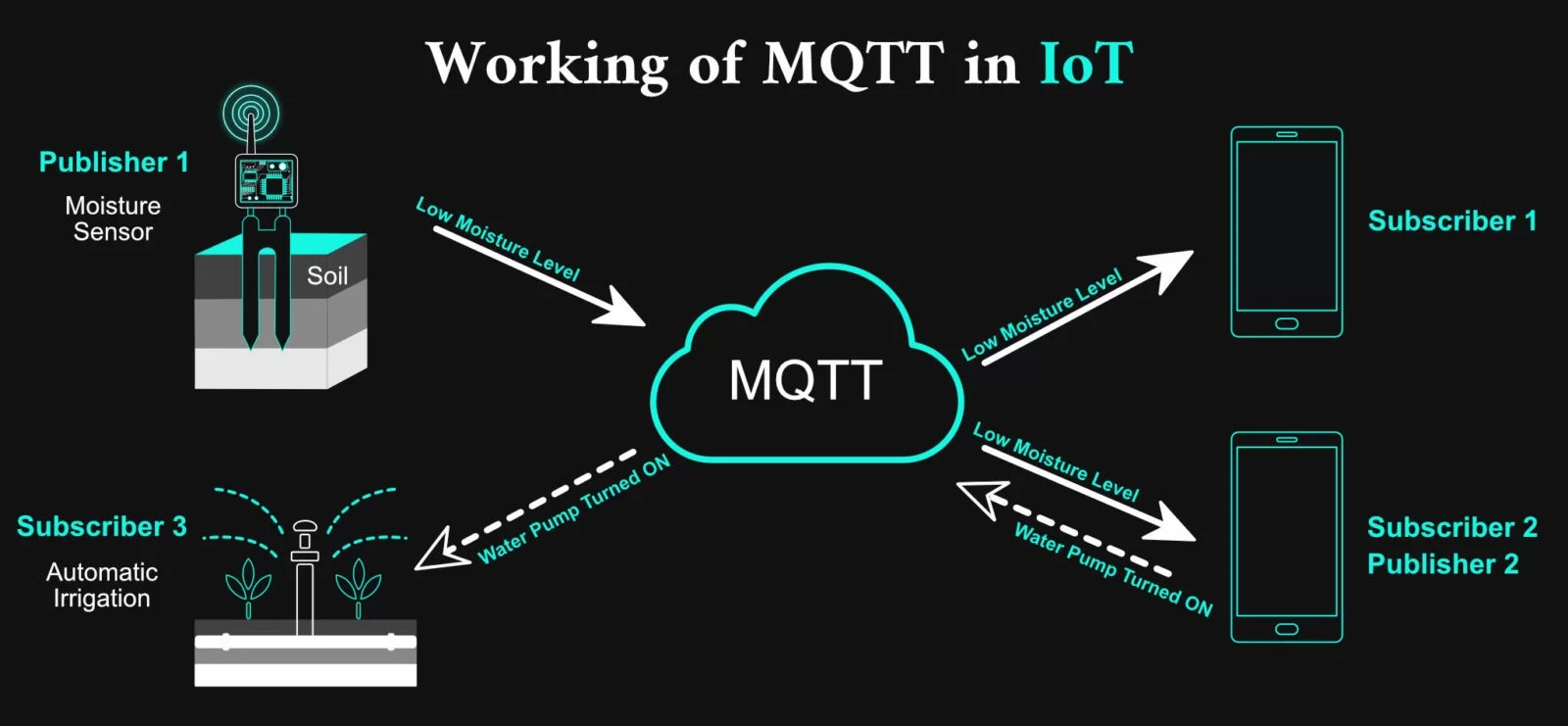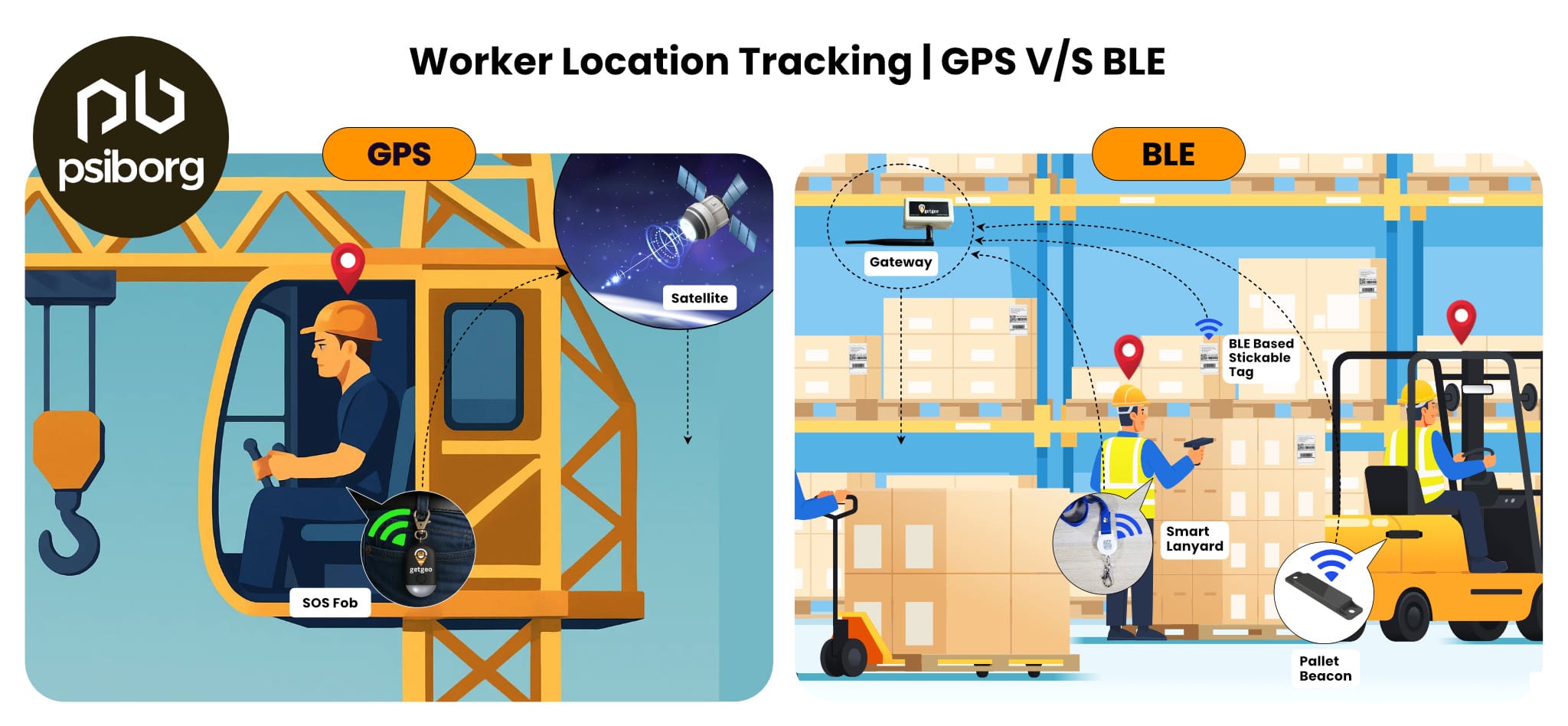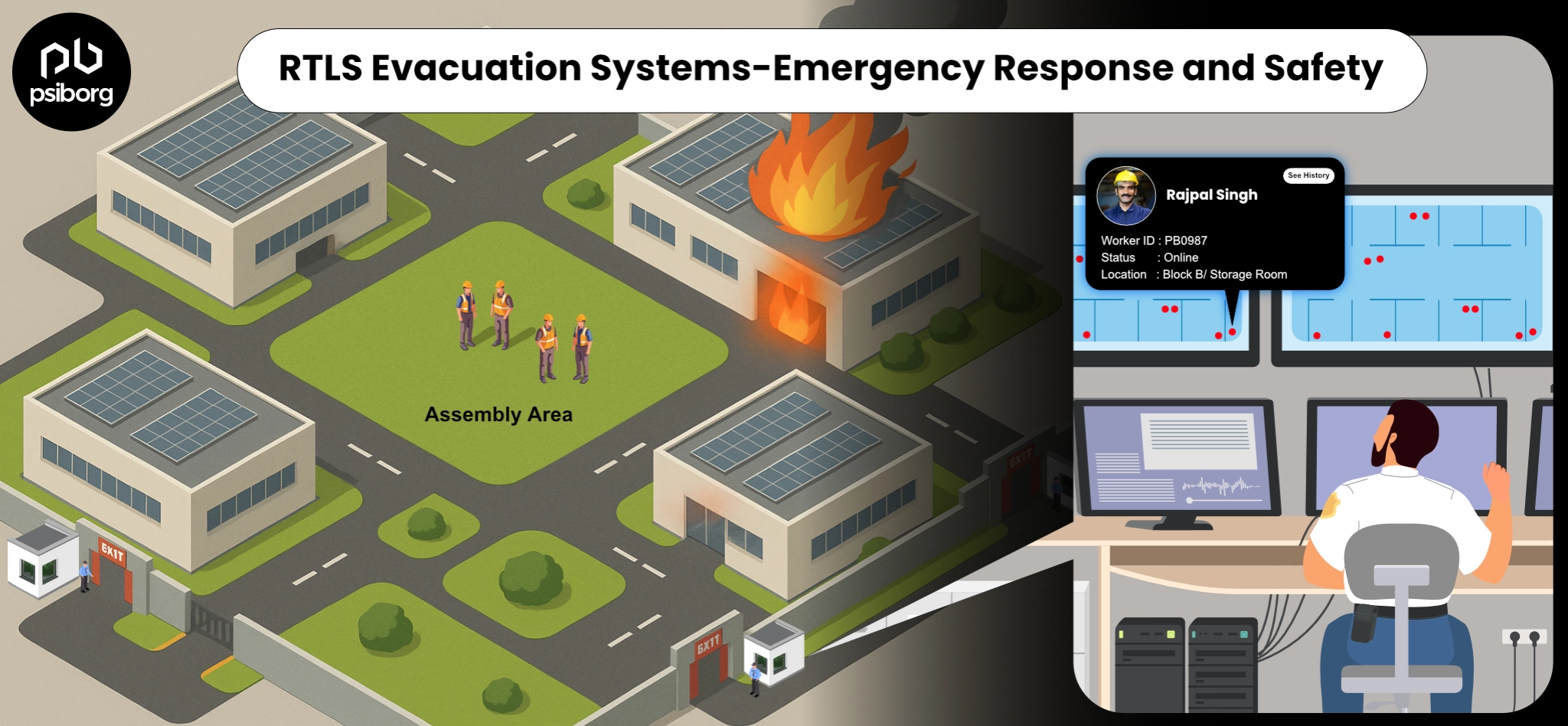WHAT IS MQTT PROTOCOL FOR IOT DEVICES?
The MQTT full form is Message Queuing Telemetry Transport, it is a protocol that is mainly used for connecting devices with each other on the internet with backend services. The underlying protocol of the Internet is TCP/IP, built on top of the TCP/IP stack, MQTT is today a standard protocol for IoT communication.
Developed by IBM in the late 1990s, linking sensors on oil pipelines to satellites was the original application of MQTT. As the name and MQTT’s full form suggest, it is a messaging protocol that supports asynchronous communication between two parties.
Nowadays, while using Low Power Wide Area Network (LPWAN) solutions, sensor data is sent wirelessly, where it is received by one or more central base stations or gateways. This data, small as individual packets but massive when aggregated together, is then sent to analytics and visualization tools like IoT dashboards. That’s where MQTT comes in.

Let’s take an example of sensors based Smart Agriculture. In the subscriber-publisher model, the one which sends data/ command is termed a publisher, and the one which receives data/ command is termed a subscriber.
The moisture sensor publishes moisture data and sends it to the broker, which when received by the subscriber can generate an alert based on the threshold value. If the moisture level is low, and the user wants to turn ON the sprinkler, then the user device publishes data/command to turn the sprinkler ON and the sprinkler receives (working as a subscriber here) command and actuates the water valve.
ADVANTAGES OF USING MQTT FOR IOT DEVICES
Before we see how MQTT actually works, let us look at some of the advantages of using MQTT for IoT communication:
MQTT ENSURES MESSAGE DELIVERY OF IOT DEVICES
Many IoT devices are movable objects and/or battery-operated. This can lead to IoT connections being unstable in certain situations. Generally, this isn’t a huge problem, but when it comes to the industrial Internet of Things, reliability is crucial. Any form of data loss or data duplication can have dire consequences and will ultimately lead to the failure of the IoT stack. Therefore, MQTT is developed in such a way that it provides impeccable reliability even in the worst network conditions.
Further, MQTT is mainly used to ensure reliability by adding three distinct flags. This is referred to as Quality of Service (QoS). The three possible flags are-
QOS 0: AT MOST ONCE DELIVERY-
At this level, there is no guarantee of delivery. Neither does the recipient acknowledge receiving the message nor does the sender store and re-transmit it. This requires the lowest amount of network traffic.
QOS 1: AT LEAST ONCE DELIVERY-
This level makes sure that the recipient receives the message at least once. The sender stores the message until it does not receive an acknowledgment from the recipient. There is a possibility that duplicate messages are also received by the recipient.
QOS 2: EXACTLY ONCE DELIVERY-
This is the highest level of service in MQTT. At this level, it is guaranteed that each message will only be received once. This level is the safest and the slowest and is suitable for critical scenarios that require a message to be guaranteed delivered and not duplicated.
Hence, it can be seen that QoS ensures that the MQTT protocol in IoT communication can be used in multiple scenarios by just tweaking the unique specifications.
LIGHTWEIGHT PROTOCOL
MQTT, which is a lightweight protocol, today supports numerous small, cheap, and low-powered IoT devices in the market. In contrast to the HTTP header which is typically about 8000 bytes long, the MQTT header is only 2 bytes in size and a few lines of code. There are millions of IoT devices that have low memory and processing power requirements, and MQTT’s lightweight protocol is suited for these devices.
BATTERY FRIENDLY IOT COMMUNICATION PROTOCOL
When IBM first developed MQTT, they had in mind to use it under harsh conditions, in places without access to electricity grids and so it needed to have the lowest possible energy consumption compared to other communication protocols. This resulted in MQTT being a battery-friendly IoT protocol. It consumes 170 times less energy than 3G networks and 47 times less energy than Wi-Fi networks and can stay connected to a battery for years together.
PACKET AGNOSTIC
Any type of data, be it binary or text, can be transmitted with the help of this protocol. It does not matter what kind of data is being transmitted as long as the receiving party knows how to interpret it.
TIME
A connected device can publish its data regardless of the state of the subscribed server. The subscribed server can then connect and receive the data when it can.
RELIABILITY AND SCALABILITY AS IOT DEVICES ARE INCREASING EVERY DAY
MQTT for IoT devices is reliable because it employs QoS that guarantees the delivery of messages, and the publish-subscribe model helps scale well as there need not be direct communication between the publisher and the subscriber.
DECOUPLED DESIGN
There are several elements in the design of the MQTT protocol that decouple the device and the subscribed server. This results in a very robust communication strategy.
MQTT IS A BETTER CHOICE FOR IOT DEVICE COMMUNICATION THAN HTTP
This is probably the most important reason for using MQTT in IoT communication. HTTP is a widely used protocol and most developers are familiar with it. But there are certain limitations to using HTTP in data transfer in the IoT. AAlso there are several advantages of using MQTT over HTTP, like:
- HTTP is a synchronous protocol; the client waits while the server responds to it. This results in poor scalability. In IoT communication, a large number of devices are connected over a network. So synchronous communication is not very effective, and asynchronous messaging protocol comes into the picture. IoT sensors send readings over the network and then it is up to the network to figure out the optimal path and timing for delivery to the destination devices and services.
- HTTP is one-way where the client must initiate the connection. In an IoT application, the devices and sensors are generally clients and they cannot passively receive commands from the network.
- HTTP is a 1-1 protocol where the client makes a request and the server responds. It is quite expensive to broadcast a message over the network using the HTTP protocol, which is very common in IoT devices.

HOW DOES MQTT WORK?
Let’s answer the question of how MQTT works. The MQTT protocol architecture uses the publish-subscribe model. What it basically means is that the device sending the message and the device receiving the message don’t communicate with each other directly. Instead, the publisher connects with the broker, which then broadcasts the message to the devices that have subscribed or registered to the particular topic. When the publisher sends a message on a particular topic subscribed to by the subscriber, the broker forwards that message to the particular client.
MQTT being lightweight and reliable is a huge plus. Before MQTT was discovered, approximately 80% of the data was being left at remote locations. But that has significantly reduced since MQTT started being used for communication in the IoT. Now it has made it possible to collect, transmit, and analyze more of the data that is collected.
Bottom line, the MQTT for IoT Devices has some specific benefits and has performed better than other protocols in use for IoT communication. With its features like reliability and low power consumption, it is the most widely used IoT connectivity protocol.
Like MQTT serves different IoT needs, similarly, our highly experienced and skilled group of engineers at PsiBorg Technologies can help you to develop end to end IoT solutions. To know more, kindly get in touch with us and we’ll be more than happy to help you.
FAQ
MQTT is one of the most important protocols in the Internet of Things. It provides lightweight messaging for small sensors and mobile devices to communicate with IoT applications. In IoT systems, MQTT allows devices to publish and subscribe to data, enabling real-time information exchange.
The main role of the MQTT protocol is to enable speedy communication between cloud servers and IoT devices. Essentially, MQTT sends messages to your IoT devices and responds to them.
The advantages of MQTT protocol in the IoT are – lightweight and battery-friendly, it connects devices during unreliable networks, it enables communication between the cloud and devices, and it has extensive programming support. There are, however, some drawbacks to MQTT, such as its inability to support video streaming and its latency problems.





